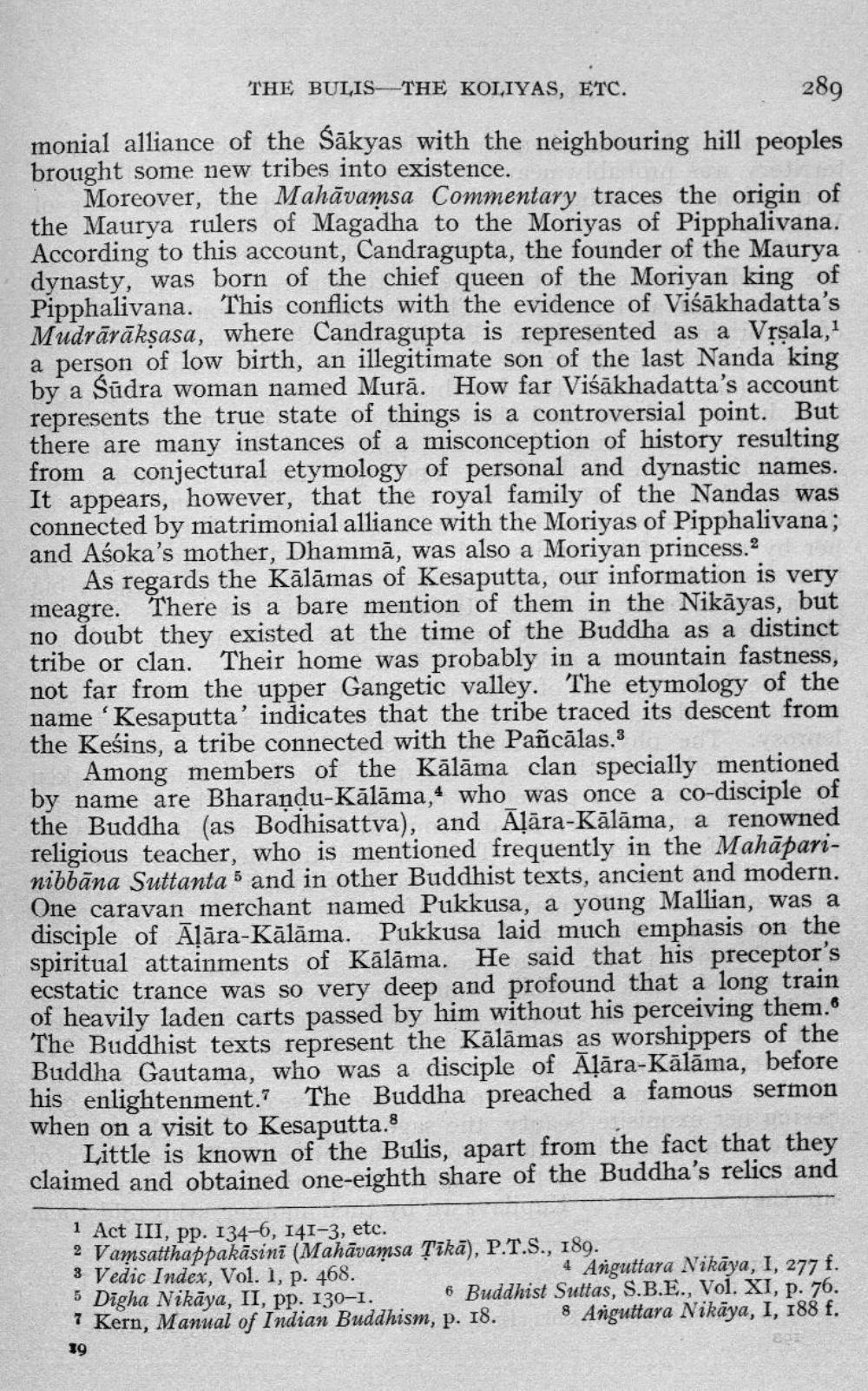________________
THE BULIS-THE KOLIYAS, ETC.
289
monial alliance of the Sakyas with the neighbouring hill peoples brought some new tribes into existence.
Moreover, the Mahavamsa Commentary traces the origin of the Maurya rulers of Magadha to the Moriyas of Pipphalivana. According to this account, Candragupta, the founder of the Maurya dynasty, was born of the chief queen of the Moriyan king of Pipphalivana. This conflicts with the evidence of Visakhadatta's Mudrārākṣasa, where Candragupta is represented as a Vṛṣala,1 a person of low birth, an illegitimate son of the last Nanda king by a Sudra woman named Mura. How far Visakhadatta's account represents the true state of things is a controversial point. But there are many instances of a misconception of history resulting from a conjectural etymology of personal and dynastic names. It appears, however, that the royal family of the Nandas was connected by matrimonial alliance with the Moriyas of Pipphalivana; and Aśoka's mother, Dhamma, was also a Moriyan princess.2
As regards the Kālāmas of Kesaputta, our information is very meagre. There is a bare mention of them in the Nikayas, but no doubt they existed at the time of the Buddha as a distinct tribe or clan. Their home was probably in a mountain fastness, not far from the upper Gangetic valley. The etymology of the name 'Kesaputta' indicates that the tribe traced its descent from the Keśins, a tribe connected with the Pañcālas.3
Among members of the Kālāma clan specially mentioned by name are Bharandu-Kālāma, who was once a co-disciple of the Buddha (as Bodhisattva), and Alara-Kālāma, a renowned religious teacher, who is mentioned frequently in the Mahāparinibbana Suttanta 5 and in other Buddhist texts, ancient and modern. One caravan merchant named Pukkusa, a young Mallian, was a disciple of Alara-Kālāma. Pukkusa laid much emphasis on the spiritual attainments of Kalāma. He said that his preceptor's ecstatic trance was so very deep and profound that a long train of heavily laden carts passed by him without his perceiving them." The Buddhist texts represent the Kālāmas as worshippers of the Buddha Gautama, who was a disciple of Alara-Kālāma, before his enlightenment." The Buddha preached a famous sermon when on a visit to Kesaputta.8
Little is known of the Bulis, apart from the fact that they claimed and obtained one-eighth share of the Buddha's relics and
1 Act III, pp. 134-6, 141-3, etc.
2 Vamsatthappakasini (Mahāvamsa Tikā), P.T.S., 189.
3 Vedic Index, Vol. 1, p. 468.
4 Anguttara Nikaya, I, 277 f.
5 Digha Nikaya, II, pp. 130-1.
6 Buddhist Suttas, S.B.E., Vol. XI, p. 76.
7 Kern, Manual of Indian Buddhism, p. 18. 8 Anguttara Nikaya, I, 188 f.
39




